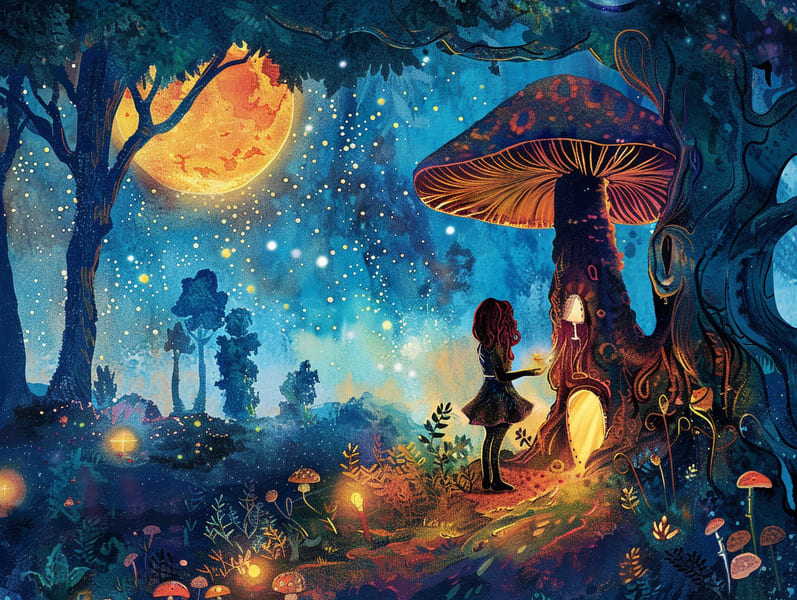The Story Behind Short Fairy Tales with the Undying Allure.

Fairy tales have ancient roots. These narratives have been recounted from one generation to the next well before they were ever inscribed. They arose from a variety of cultures, including African traditions. They were initially disseminated among elders, often carrying themes and messages related to the societal norms and beliefs of the time.
The famous Grimm duo, Jacob and Wilhelm, were among the first to gather many of these beloved stories. Their compilation, "Grimm's Folk Tales," included tales like "The Story of Cinderella," "The Story of Hansel and Gretel," and "The True Story of Snow White," which have since become cornerstones in the world of iconic fairy tales. Similarly, Hans Christian Andersen's delightful stories, such as "The Sea Maid," and "The Story of the Ugly Duckling," have stolen hearts worldwide, ensuring their place in the pantheon of classic fairy tales.
Though they are centuries old, traditional fairy tales remain as relevant as ever, especially as bedtime stories for kids. These charming stories are now available in various formats, including colorful picture books, whimsical animations, and digital storybooks.
Their persistent charm can be linked to several captivating elements:
Significant Morals: Old fairy tales often whisper important moral lessons. Fairy tales like "The Wolf and the Liar" teach the benefit of truth, while "The Story of the Tortoise and the Hare" point out the merits of persistence and modesty. These narratives offer the young clear distinctions between ethical and unethical, forming their moral compass in a tender yet important way.
Sympathy and Perception: Fairy tales frequently feature heroines facing struggles and tests, prompting young readers to resonate with their struggles and celebrate their triumphs. For instance, "The Tale of Beauty and the Beast" demonstrates the necessity of looking deeper to acknowledge the real person of a character, strengthening sympathy and knowledge.
Cultural Comprehension: Many classic fairy tales are deeply ingrained in the cultural contexts from which they blossomed. Immersing in these stories can provide fascinating glimpses into different beliefs, promoting a sense of cultural appreciation and acknowledgment.
Fantasy and Innovation: The supernatural elements in fairy tales—supernatural elements—fuel children’s dreams. These narratives lead readers to enchanted realms, enlivening imaginative dreams and a sense of mystery that persists a lifetime.
Old fairy tales are not only spellbinding but also enlightening. They act as fascinating tools in nurturing various intellectual and emotional capacities in the young. When traditional fairy tales are voiced, they develop verbal development by bringing new language and intricate sentence structures. This practice also cultivates auditory perception and attention, as children keep up with the story, keen to see what happens next.
Furthermore, debating the themes and characters of timeless fairy tales can strengthen reasoning skills and reasoning skills. Young ones are educated to discover patterns, anticipate outcomes, and figure out cause and effect. These discussions also ease young readers say their thoughts and feelings, strengthening their emotional intelligence.
In today’s information this site age, the prevalence of digital storybooks has made these fairy tales more available than ever. Internet resources and digital apps present vast collections of old fairy tales that can be seen or played anytime, anywhere. Fairy tales read aloud are particularly widespread, presenting an captivating way for young readers to take part in these mesmerizing stories. Voice books and read-out-loud videos lead characters and settings to life, often complemented by captivating music and songs that enhance the narrative journey.
The everlasting appeal of traditional fairy tales lies in their ability to modify to the present while retaining their basic principles. Contemporary retellings of these stories often integrate more multicultural figures and modern settings, making them understandable to today’s audience. However, the essential messages of spirit, kindheartedness, and integrity remain unchanged, continuing to impact children of all ages.
Classic fairy tales also offer a sense of serenity and recognition. They extend a coherent narrative with a clear beginning, middle, and end, often closing with the wrap-up of conflicts and the triumph of rightness over wrongness. This certainty can be consoling for children, affording a sense of firmness in an fluid world.
Ancient fairy tales continue to spellbind and instruct new generations, maintaining their majesty and relevance in modern society. As children's bedtime stories, they confer a perfect blend of fantasy and learning, sustaining moral values, empathy, and creativity. The accessibility of online fairy tales and the widespread nature of fairy tales narrated warrant that these classic narratives remain attainable to new generations.
By preserving and circulating these narratives, we continue to commemorate the rich tapestry of legends and cultural heritage. Whether you are discovering a richly illustrated book, seeing a digital library, or hearing an narrated book, the mystique of children's fairy tales is always within reach. These fairy tales convey of the consistent strength of narratives and its ability to bond us across time and space.
Be it you are browsing a colorful picture book, accessing a virtual library, or hearing an spoken story, the allure of old fairy tales is always within reach.
These tales show us of the unwavering essence of tales and its ability to join us across centuries and lands, forging a link that captivates and teaches alike.